
- Home
- Travel Packages
- Top Destination
-
Travel Attraction
By Category
Top Attraction

- Travel Agents
- Car Rentals
- Hotels
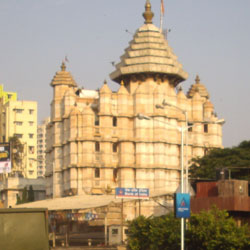
About The Siddhivinayak Temple The Siddhivinayak Temple is a famous Hindu temple located in Mumbai, Maharashtra. Dedicated to Lord Ganesha, it is one of the most visited and revered temples in India. The temple is known for fulfilling the wishes of its devotees and is believed to bring good luck and prosperity to those who worship there. Architecture of Siddhivinayak Temple The Siddhivinayak Temple is built in the traditional Indian architectural style with a dome-shaped roof and intricately carved pillars. The main sanctum sanctorum houses the idol of Lord Ganesha, which is adorned with gold and precious stones. The temple complex also includes shrines dedicated to other Hindu deities like Lord Shiva and Goddess Parvati. History The history of the Siddhivinayak Temple dates back to the 18th century when a childless woman named Deubai Patil commissioned the construction of the temple as a dedication to Lord Ganesha. Over the years, the temple gained popularity among devotees from all walks of life, who come to seek the blessings of Lord Ganesha for various reasons. Best Time To Visit The Siddhivinayak Temple is open to devotees all year round, but the best time to visit is during the festivals of Ganesh Chaturthi and Maghi Ganesh Jayanti when the temple is beautifully decorated and attracts a large number of worshippers. The temple is also less crowded during weekdays, making it a peaceful place for prayer and meditation. How To Reach The Siddhivinayak Temple is located in Prabhadevi, a suburb of Mumbai. It is easily accessible by road, rail, and public transport. The nearest railway station is Dadar, which is just a short walk away from the temple. Visitors can also take a taxi or bus to reach the temple from any part of Mumbai. Significance Of The Siddhivinayak Temple The Siddhivinayak Temple holds great significance for devotees who believe that worshipping Lord Ganesha at this temple can help them overcome obstacles and attain success in their endeavors. Many people offer prayers and perform rituals at the temple to seek blessings for health, wealth, and happiness. The temple is also known for its charitable activities and social initiatives, making it a symbol of faith and benevolence. In conclusion, the Siddhivinayak Temple is not just a place of worship but a spiritual sanctuary where devotees can connect with the divine and find solace in times of need. Its rich history, beautiful architecture, and sacred atmosphere make it a must-visit destination for anyone seeking blessings and inner peace.
Explore More
About The Mahalaxmi Temple The Mahalaxmi Temple, located in Mumbai, is a sacred Hindu temple dedicated to the goddess Mahalaxmi. The temple is one of the oldest temples in the city and holds immense religious significance among devotees. The goddess Mahalaxmi is worshipped here as the presiding deity, symbolizing wealth, prosperity, and well-being. Architecture of Mahalaxmi Temple The Mahalaxmi Temple showcases traditional Hindu temple architecture with intricate carvings and sculptures adorning its walls and pillars. The main sanctum sanctorum houses the idol of Mahalaxmi adorned with jewels and flowers. The temple's entrance is marked by a tall tower, known as a shikara, which is a prominent feature of South Indian temple architecture. History The Mahalaxmi Temple has a rich history dating back several centuries. It is believed that the temple was built during the reign of the Maratha Empire in the 18th century. Over the years, the temple has undergone renovations and expansions, but its spiritual essence and significance have remained intact. The temple attracts thousands of devotees every year who come to seek the blessings of the goddess. Best Time To Visit The best time to visit the Mahalaxmi Temple is during the festival of Navratri, which is celebrated with great enthusiasm and fervor. Navratri is a nine-day festival dedicated to the worship of the goddess Durga, of which Mahalaxmi is considered an incarnation. The temple is beautifully decorated during this time, and devotees flock to offer their prayers and seek blessings. How To Reach The Mahalaxmi Temple is centrally located in Mumbai and is easily accessible by both public and private transportation. The nearest railway station is Mahalaxmi Station, which is just a short walk away from the temple. Additionally, local buses and taxis are readily available for those who prefer to travel by road. The temple's convenient location makes it a popular destination for both locals and tourists. Significance Of The Mahalaxmi Temple The Mahalaxmi Temple holds immense significance for devotees who believe in the goddess's power to bring wealth, prosperity, and happiness into their lives. Many people visit the temple to seek blessings for success in their endeavors, good health, and overall well-being. The temple is also known for its charitable activities and social initiatives, making it a symbol of faith, devotion, and community service. In conclusion, the Mahalaxmi Temple in Mumbai stands as a testament to the enduring faith and devotion of its worshippers. With its rich history, beautiful architecture, and spiritual significance, the temple continues to attract devotees from all walks of life who come to seek solace, blessings, and divine grace from the goddess Mahalaxmi. Whether you are a devout follower or simply a curious visitor, a visit to the Mahalaxmi Temple is sure to leave you with a sense of peace, serenity, and spiritual fulfillment.
Explore More
About The Iskcon Temple The Iskcon Temple in Mumbai, officially known as the Sri Sri Radha Rasabihari Ji Temple, is a spiritual retreat located in Juhu. This temple is a part of the International Society for Krishna Consciousness (Iskcon) and serves as a center for spiritual enlightenment, cultural activities, and community service. Architecture Of Iskcon Temple The Iskcon Temple in Mumbai is known for its breathtaking architecture. The main structure of the temple is built in the traditional Indian style of architecture, with intricate carvings and vibrant colors. The temple complex also includes beautifully landscaped gardens, meditation halls, and a vegetarian restaurant. History The Iskcon Temple in Mumbai was established in 1978 by the followers of A.C. Bhaktivedanta Swami Prabhupada, the founder of the Iskcon movement. Since its inception, the temple has been a popular destination for devotees and tourists alike, attracting visitors from all over the world who come to seek spiritual solace and participate in the various cultural events held at the temple. Best Time To Visit The best time to visit the Iskcon Temple in Mumbai is during the festivals of Janmashtami and Diwali when the temple is beautifully decorated and spiritual celebrations are held. The temple is also a serene retreat for those seeking inner peace and tranquility throughout the year. How To Reach The Iskcon Temple in Mumbai is easily accessible by both public and private transportation. The nearest railway station is Andheri, which is well-connected to the rest of the city. Visitors can also take a bus or taxi to reach the temple from any part of Mumbai. Significance Of The Iskcon Temple The Iskcon Temple in Mumbai holds great significance for followers of the Iskcon movement as a place of worship, meditation, and spiritual learning. The temple is dedicated to Lord Krishna and Radha, and serves as a center for spreading the teachings of devotion and love for God. Visitors to the temple can participate in prayers, chanting, and other spiritual activities that help in connecting with their inner selves and finding peace and harmony in their lives.
Explore More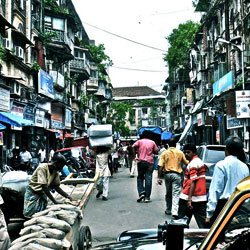
North of Crawford Market, are the narrow lanes of Kalbadevi a predominantly Muslim area hemmed in by laundry-draped chawls, which is home to a seething mass of people. It is a complete contrast to South Mumbai cleanliness and orderliness and is a different world in itself giving insight into the lives of people living in such chawls. No visit to Mumbai is complete without a foray into the bazaars of Kalbadevi, north of Crawford Market. It is a perfect foil to the relative space, orderliness and modernity of South Mumbai.
Explore More
About The Mumbadevi Temple The Mumbadevi Temple is a Hindu temple located in Mumbai, Maharashtra. It is dedicated to Mumbadevi, who is believed to be the city's patron goddess. The temple is one of the oldest in Mumbai and holds great religious significance among the locals. Architecture of Mumbadevi Temple The Mumbadevi Temple is built in the traditional Hindu architectural style. The temple's exterior is adorned with intricate carvings and sculptures depicting various Hindu deities. The sanctum sanctorum houses the idol of Mumbadevi, which is made of black stone and adorned with jewels. History The history of the Mumbadevi Temple dates back to the 16th century when the city of Mumbai was known as Bombay. It is said that the temple was originally located at Bori Bunder, which was one of the seven islands that formed Mumbai. Over the years, as the city expanded, the temple was relocated to its current location in Zaveri Bazaar. Best Time To Visit The Mumbadevi Temple can be visited throughout the year, but the best time to visit is during the Navratri festival, which is dedicated to the goddess Durga. The temple is beautifully decorated during this time, and devotees from all over the city come to seek the blessings of Mumbadevi. How To Reach The Mumbadevi Temple is located in the heart of Mumbai, making it easily accessible by both public and private transportation. The nearest railway station is Chhatrapati Shivaji Terminus, which is just a short distance away from the temple. Visitors can also take a bus or taxi to reach the temple. Significance Of The Mumbadevi Temple The Mumbadevi Temple holds great significance among the locals of Mumbai. It is believed that Mumbadevi is the guardian deity of the city and protects its residents from harm. Devotees visit the temple to seek blessings for prosperity, protection, and success in various endeavors. The temple also attracts tourists who are interested in exploring the religious and cultural heritage of Mumbai. In conclusion, the Mumbadevi Temple is a sacred place of worship that symbolizes the rich history and tradition of Mumbai. It is a must-visit destination for anyone looking to experience the spiritual essence of the city and seek the blessings of the goddess Mumbadevi.
Explore More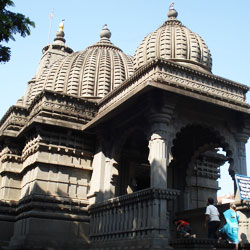
About The Kala Ram Mandir Temple The Kala Ram Mandir Temple, located in Nashik, Maharashtra, is a popular Hindu temple dedicated to Lord Rama. The temple is known for its beautiful architecture, serene surroundings, and religious significance. Devotees from all over the country visit this temple to seek blessings and offer prayers to Lord Rama. Architecture of Kala Ram Mandir Temple The Kala Ram Mandir Temple boasts of exquisite architecture that reflects traditional Hindu temple design. The temple is built using white marble and features intricate carvings and sculptures depicting various scenes from Hindu mythology. The main sanctum sanctorum houses the idol of Lord Rama along with Goddess Sita and Lord Lakshmana. The temple complex also has smaller shrines dedicated to other Hindu deities. History The Kala Ram Mandir Temple has a rich history that dates back several centuries. It is believed that the temple was constructed by a local king to honor Lord Rama. Over the years, the temple has undergone several renovations and extensions to enhance its beauty and religious significance. Today, the temple stands as a symbol of devotion and faith for millions of devotees. Best Time To Visit The best time to visit the Kala Ram Mandir Temple is during the Hindu festivals of Ram Navami and Diwali when the temple is adorned with lights and decorations. These festivals attract a large number of devotees who come to offer prayers and seek blessings from Lord Rama. Additionally, the winter months from November to February are also a good time to visit the temple due to the pleasant weather. How To Reach The Kala Ram Mandir Temple is located in Nashik, Maharashtra, making it easily accessible by road, rail, and air. The nearest airport is the Ozar Airport, which is about 30 kilometers away from the temple. The Nashik Road Railway Station is the nearest railhead, located around 10 kilometers from the temple. Visitors can also reach the temple by taking a bus or hiring a taxi from Nashik city. Significance Of The Kala Ram Mandir Temple The Kala Ram Mandir Temple holds immense religious significance for devotees of Lord Rama. It is believed that offering prayers at this temple can fulfill one's wishes and bring peace and prosperity into their lives. The temple is also known for its spiritual aura and serene atmosphere, which helps devotees connect with the divine. Many people visit the temple to seek blessings for their well-being, success, and happiness. In conclusion, the Kala Ram Mandir Temple in Nashik is a sacred place of worship that attracts devotees from all walks of life. With its beautiful architecture, rich history, and religious significance, the temple stands as a symbol of devotion and faith. Whether you are a devout follower of Lord Rama or simply seeking spiritual solace, a visit to this temple is sure to leave you feeling blessed and rejuvenated.
Explore More
About The Ghrishneshwar Temple The Ghrishneshwar Temple, also known as the Ghrneshwar Jyotirlinga Temple, is a Hindu temple dedicated to Lord Shiva located in Aurangabad, Maharashtra. It is one of the 12 Jyotirlinga shrines mentioned in the Shiva Purana and is considered to be one of the holiest sites for Shiva devotees. The temple is a magnificent example of ancient Hindu architecture and attracts a large number of pilgrims and tourists each year. Architecture of Ghrishneshwar Temple The Ghrishneshwar Temple is built in the Hemadpanthi style of architecture, which is characterized by intricately carved stone pillars, walls, and ceilings. The temple has a five-tiered shikara (spire) that is adorned with sculptures of various Hindu deities. The sanctum sanctorum houses the lingam (symbol of Lord Shiva) and is surrounded by beautifully carved pillars and statues. The temple complex also includes a large courtyard, a water tank, and several smaller shrines dedicated to other gods and goddesses. History The Ghrishneshwar Temple dates back to the 18th century and is believed to have been constructed by Ahilyabai Holkar, the queen of the Malwa kingdom. According to legend, the temple was built at the site where Lord Shiva appeared in the form of a jyotirlinga (pillar of light) to fulfill the prayers of a devout brahmin named Ghushmaar. The temple has undergone several renovations and restorations over the years, but its original charm and spiritual significance have remained intact. Best Time To Visit The best time to visit the Ghrishneshwar Temple is during the winter months from November to February when the weather is pleasant and conducive for sightseeing. The temple also experiences a surge in visitors during the Mahashivratri festival, which is celebrated with great fervor and devotion by devotees from all over the country. It is advisable to avoid visiting the temple during the monsoon season as the region experiences heavy rainfall and the temple may be crowded with pilgrims. How To Reach The Ghrishneshwar Temple is located in the village of Verul, approximately 30 kilometers from Aurangabad city in Maharashtra. The nearest airport is Aurangabad Airport, which is well-connected to major cities in India. The temple can be easily reached by road from Aurangabad city via local buses, taxis, and auto-rickshaws. It is also possible to hire a private car or take a guided tour to visit the temple and other nearby attractions in the region. Significance Of The Ghrishneshwar Temple The Ghrishneshwar Temple is of great significance to Shiva devotees as it is believed to be the abode of one of the 12 Jyotirlingas, which are considered to be the most sacred shrines dedicated to Lord Shiva. Pilgrims visit the temple to seek blessings, offer prayers, and perform rituals to fulfill their wishes and receive divine grace. The temple also holds cultural and historical importance as it is a fine example of ancient Hindu architecture and craftsmanship. In conclusion, the Ghrishneshwar Temple in Aurangabad is a place of immense spiritual and cultural value, attracting visitors from all walks of life. Whether you are a devout pilgrim seeking blessings or a curious traveler interested in exploring the rich heritage of India, a visit to this sacred site is sure to leave a lasting impression on your heart and mind.
Explore More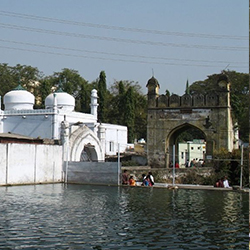
Panchakki And Baba Shah Musafir Temple
Located close to Bibi ka Maqbara in Daulatdabad, Panchakki is a water mill complex consisting of a court, a madrasa, the house of a minister, a mosque, houses dedicated to females and a Sarai. The mill gets it names from the grinding mill used to crush grains for the pilgrims. Enclosed in varieties of blue and shades of green, Panchakki is a perfect picnic spot and a much-frequented attraction in Daulatabad. A personification of medieval Indian architecture, Panchakki alias Nehar-e-Panchakki was erected in 1744 in the memory of Hazrat Baba Shah Musafir. He was a Sufi saint and spiritual guide of Aurangzeb. The amazing Panchakki is situated in the heart of the city, meaning the chakki or grinder run by water. This panchakki was set up in the 17th century for the pilgrims and followers of saints as well as for hordes of the garrison. There is a pond on one side and on the other side is this grinding mill. There is an underground water stream six km away from Panchakki, which is a stream of Harsul River. It is known to be the source of steady water supply to this construction and is transported through earthen pipes. You can only envisage the pure brilliance and farsightedness of the creation plan of this marvel. Dargah Baba Shah Musafir is a 17th-century memorial built by Emperor Aurangzeb in the honour of Baba Shah Musafir who was the spiritual teacher of the emperor. The memorial complex has a tombstone of Baba Shah Musafir temple or a mosque, a beautiful garden and an enticing fountain. The ambience created in the beautiful complex is remarkably peaceful and inviting. Special Attraction: What is noteworthy is that even though the purpose of the building Panchakki was sheer utility, the beauty of it is not compromised at least. The peaceful silver waters of the pool act like the sky's glass and the mild, rhythmic currents hypnotise the spectator. One can find many attractive places to visit like Shahi Eidgah and Navkhanda Palace. History of Panchakki And Baba Shah Musafir Temple: This spellbinding structure was built with great engineering and floor plans that were way ahead of their time. At the time of structure, Panchakki was a real whizz for the whole nation. Based purely on cutting-edge physics and technical principles, its key purpose was to generate electricity from an adjacent flowing spring and grind grains for the use of pilgrims, saints, military troops and devotees that came to Daulatabad in the 17th century. Baba Shah Musafir Dargah, an extensive garden featuring amazingly beautiful vestiges. It is primarily known for the fact that from here one can see the view Kham River and the cenotaph of Baba Shah Musafir. Architecture of Panchakki And Baba Shah Musafir Temple: Panchakki and the maqbara in the complex were erected by Turktaz Khan, a nominated noble on the staff of King Nizam-ul-Mulk Asaf Jah. The comprehensive and deep tank that greets you in front of the Baba Shah Musafir Temple, Daulatabad and beautiful flowering fountains were added about twenty years later by Jamil Beg Khan. Best Time to Visit Panchakki And Baba Shah Musafir Temple: The best time to visit Panchakki and Baba Shah Musafir Temple, Daulatabad is from November to March. The weather is moderately pleasant around this time. But if you want to see this Panchakki in its active phase, then monsoon is the best time to visit. Winters are somewhat chilling, but people usually enjoy this kind of weather while touring. How to Reach Panchakki And Baba Shah Musafir Temple Daulatabad? Daulatabad is one of the most popular places to visit in Maharashtra. State buses and private tour vehicles regularly ply to the city, and Panchakki is only 1 km away from the central city. The nearest bus stop to Panchakki is Ghati bus stop at a mere distance of 350 meters. Aurangabad Railway Station is the closest railhead, at a distance of 4 km, which is approximately a 12 min drive. Tourists can hire a private car, an auto rickshaw or use public transportation like city buses to reach there. The drive is an approximate 4-5 km from Central Bus Stand and 8-10 km from Railway Station. Interesting Facts and Trivia about Panchakki: 1. The Panchakki watermill dated back to the 17th century and built with the intention to grind grains for the Sufi saints. 2. This watermill gets it supply from an underground conduit connected to a well located right on the top Harsul river junction. 3. There is a huge banyan tree of more than 300 years age, which stands tall by Panchakki. It only add brimming magnificence to its beauty. Things to Do: When you have planned you visit Panchakki, don’t forget to visit Dargah of Baba Shah Musafir very close to it. Pay very nominal fees at the premise, and enjoy the beautiful sight of pure and shiny water. Enjoy the excellent panoramic view of the beautiful Kham River. Availability: For visiting the whole area along with the Dargah of Baba Shah Musafir, you can easily find experienced guides over there. They very well explain the history and other crucial details related to the ancient Panchakki and Dargah. Other nearby attractions are: • Sufi Saints of Aurangabad • Aurangabad Water system • Bibi ka maqbara • Ellora caves • Chand Minar • Sonehri Mahal • Jama Mosque Traveller Tips: Do not touch any part of the watermill which is strictly prohibited from maintaining state and order of the Panchakki. Do not carry any eatables or plastic bags inside the premise. Maintaining the cleanliness is on the top priority. Keep a close eye on children with visiting with them. Nearby restaurants China town Food lovers Tandoor restaurant and bar Kailash Swad Famous for: This place is famous for tourism, experience seekers, photography and learning. If you also want to explore the ancient beauty and magnificent engineering of Panchakki and Baba Shah Musafir temple in Daulatabad, book a tour package with guide facility.
Explore More
About The Balaji Temple The Balaji Temple, also known as the Shri Balaji Temple, is a famous Hindu temple located in Nagpur, Maharashtra. It is dedicated to Lord Venkateswara, an incarnation of the Hindu god Vishnu. The temple is a popular pilgrimage site for devotees who come to seek blessings and offer prayers to Lord Balaji. Architecture of Balaji Temple The Balaji Temple is renowned for its magnificent architecture, featuring intricate carvings and stunning sculptures. The main sanctum sanctorum houses the idol of Lord Venkateswara, adorned with jewels and flowers. The temple complex also includes shrines dedicated to other deities such as Lord Ganesha, Lord Hanuman, and Goddess Lakshmi. The architecture of the Balaji Temple is a beautiful blend of traditional South Indian and contemporary styles, making it a unique and visually appealing structure. The temple's gopuram (tower) is adorned with colorful sculptures depicting various episodes from Hindu mythology, adding to its grandeur. History The Balaji Temple was established in the late 19th century by a group of devotees who wanted to create a sacred place for worshiping Lord Venkateswara. Over the years, the temple has undergone several renovations and expansions, but its spiritual significance has remained unchanged. According to legend, the idol of Lord Venkateswara in the Balaji Temple is a self-manifested deity that is believed to have miraculous powers. Many devotees visit the temple to offer prayers and seek blessings for their well-being and prosperity. Best Time To Visit The best time to visit the Balaji Temple is during the annual festivals and special occasions dedicated to Lord Venkateswara. The temple is particularly crowded during festivals like Vaikuntha Ekadashi, Panguni Uttiram, and Brahmotsavam, when devotees throng to the temple to participate in the celebrations. For those who prefer a quieter and more serene visit, weekdays are generally less crowded compared to weekends and holidays. The weather in Nagpur is pleasant during the winter months, making it an ideal time to visit the temple and explore the surrounding areas. How To Reach The Balaji Temple is located in the heart of Nagpur city, making it easily accessible by road, rail, and air. The temple is situated near the Nagpur Railway Station, which is well-connected to major cities across India. Visitors can also reach the temple by hiring a taxi or auto-rickshaw from any part of the city. For those traveling by air, the Dr. Babasaheb Ambedkar International Airport in Nagpur is the nearest airport to the temple. From the airport, visitors can hire a cab or take a bus to reach the Balaji Temple conveniently. Significance Of The Balaji Temple The Balaji Temple holds great significance for devotees who believe in the power and benevolence of Lord Venkateswara. Many people visit the temple to seek blessings for their families, health, and prosperity. The temple also serves as a spiritual retreat for those seeking solace and inner peace. Devotees often perform rituals and offer prayers at the temple to fulfill their wishes and express their gratitude to the divine. The serene atmosphere and spiritual ambience of the Balaji Temple create a sense of tranquility and devotion among visitors, making it a sacred place of worship for people of all ages and backgrounds. In conclusion, the Balaji Temple in Nagpur is not just a religious site but a symbol of faith, devotion, and cultural heritage. Its stunning architecture, spiritual significance, and historical legacy make it a must-visit destination for anyone seeking a spiritual experience in the city of Nagpur.
Explore More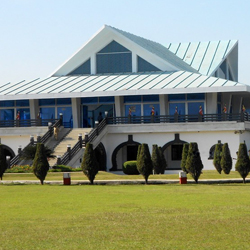
About The Dragon Palace Temple The Dragon Palace Temple is a stunning Buddhist temple located in Kamptee, near Nagpur in the state of Maharashtra, India. It is one of the most important places of worship for Buddhists in the region and attracts visitors from around the world. The temple complex is spread over a vast area and is known for its beautiful architecture, serene surroundings, and spiritual ambiance. Architecture of The Dragon Palace Temple The architecture of The Dragon Palace Temple is a perfect blend of traditional Buddhist design elements and modern aesthetics. The main temple building is adorned with intricate carvings, colorful murals, and ornate statues of Buddha and other deities. The temple complex also features lush gardens, fountains, and a large prayer hall where devotees can meditate and offer their prayers. History The Dragon Palace Temple was built in the late 1980s by a group of dedicated Buddhist monks and followers. The temple complex was inspired by the ancient Nalanda University in India and the traditional Buddhist monasteries of Tibet. Over the years, the temple has become a center of Buddhist culture, education, and spiritual practice in the region. Best Time To Visit The Dragon Palace Temple can be visited throughout the year, but the best time to visit is during the months of October to March when the weather is pleasant and conducive for sightseeing. The temple is also beautifully decorated during festivals like Buddha Purnima and attracts a large number of devotees and tourists during these times. How To Reach The Dragon Palace Temple is located in Kamptee, near Nagpur in Maharashtra. It is easily accessible by road from Nagpur city, which is well-connected to major cities in India by air, rail, and road. Visitors can hire a taxi or take a bus from Nagpur to reach the temple complex. The nearest railway station is also located in Nagpur, which is connected to all major cities in India. Significance Of The Dragon Palace Temple The Dragon Palace Temple holds great significance for Buddhists as a place of worship, meditation, and spiritual learning. The temple complex is home to several sacred relics, scriptures, and artifacts related to Buddha and his teachings. It is also a place where monks and followers come together to practice mindfulness, compassion, and other virtues advocated by Buddhism. In conclusion, The Dragon Palace Temple in Nagpur is a must-visit destination for anyone interested in exploring Buddhist culture, art, and spirituality. The temple's serene surroundings, stunning architecture, and rich history make it a truly special place that leaves a lasting impression on all who visit.
Explore More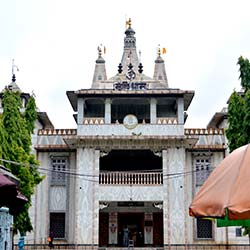
About The Muktidham Temple The Muktidham Temple is a famous Hindu temple located in Nashik, Maharashtra. It is dedicated to various Hindu gods and is a popular pilgrimage site for devotees. The temple is known for its beautiful architecture and religious significance, making it a must-visit destination for spiritual seekers. Architecture of Muktidham Temple The Muktidham Temple is constructed using white Makrana marble, which gives it a stunning and pristine appearance. The temple complex is spread over a vast area and consists of various shrines dedicated to different deities, including Lord Rama, Goddess Durga, Lord Hanuman, and Lord Ganesha. The intricate carvings and ornate decorations on the walls and ceilings of the temple add to its grandeur and beauty. History The construction of the Muktidham Temple was initiated by the Birla family in the 1970s. The temple was built as a tribute to various Hindu gods and to promote spiritual awareness among the people. The temple's inauguration took place in 1971 and since then, it has been a popular place of worship for devotees from all over the country. Best Time To Visit The best time to visit the Muktidham Temple is during the winter months, from November to February, when the weather is pleasant and conducive for sightseeing. The temple also sees a surge in visitors during festivals like Diwali and Dussehra, as special ceremonies and rituals are conducted during these auspicious occasions. How To Reach The Muktidham Temple is located in Nashik, Maharashtra, and is easily accessible by road and rail. The nearest airport is the Nashik Airport, which is well-connected to major cities in India. Visitors can also reach the temple by taking a bus or hiring a taxi from Nashik city, which is approximately 8 kilometers away. Significance Of The Muktidham Temple The Muktidham Temple holds immense significance for devotees as it is believed to be a place where one can attain salvation or 'mukti' from the cycle of birth and death. The temple's sanctity and spiritual ambiance attract thousands of pilgrims every year who come to seek blessings and offer prayers to the deities. The temple also serves as a cultural and religious hub, hosting various events and ceremonies throughout the year. Overall, the Muktidham Temple in Nashik is a place of great religious importance and architectural beauty, making it a must-visit destination for those seeking spiritual enlightenment and divine blessings.
Explore More2 Day 1 Night Pune To Tuljapur Akkalkot Pandharpur
2 Days/ 1 Night
Pune
2 Nights 3 Days Mahabaleshwar - Panchgani Tour
3 Days/ 2 Night
Mahabaleshwar - Panchgani
5 Night - 6 Days Maharashtra 5 Jyotirlinga Darshan Tour
6 Days/ 5 Night
Aurangabad - Pune - Shirdi - Trimbakeshwar - Shani Shingnapur - Hingoli - Beed
SHIRDI SAI DARSHAN WITH MUMBAI & ELLORA, 3 JOTHIRLINGAM, SHANISHINGNAPUR BY FLIGHT FROM CHENNAI
3 Days/ 2 Night
Mumbai - Pune - Shirdi

Tapovan is one of the most significant and serene places in Nashik, Maharashtra. Known for its deep-rooted connection with Hindu mythology, it attracts pilgrims, nature lovers, and history enthusiasts. If you are planning to visit Tapovan, here is everything you need to know from a traveler’s perspective. Tapovan is a sacred site that holds immense mythological importance. The name ‘Tapovan’ is derived from two Sanskrit words: ‘Tapas’ (penance) and ‘Vana’ (forest), meaning ‘the forest of penance.’ According to legends, this is the place where Lord Rama, along with his wife Sita and brother Lakshmana, spent a part of their exile (Vanvaas). It is also believed that Sage Agastya and other saints performed meditation (Tapasya) here. Nestled along the banks of the River Godavari, Tapovan is not just a religious site but also a natural retreat, offering a peaceful ambiance and lush greenery. Why Visit Tapovan? Mythological Significance: Tapovan is closely linked to the epic Ramayana. The spot where Lakshmana cut off Surpanakha’s nose is believed to be here, giving Nashik its name (‘Nasika’ meaning nose in Sanskrit). Spiritual Experience: The place is considered sacred and offers a tranquil environment for meditation, yoga, and prayers. Scenic Beauty: The area is surrounded by dense forests, the flowing River Godavari, and picturesque landscapes, making it a perfect place for relaxation. Ideal for Photography: If you love capturing natural beauty and historical sites, Tapovan offers plenty of opportunities. A Must-Visit for Pilgrims: The site is an essential part of the Panchavati pilgrimage circuit in Nashik. Major Attractions in Tapovan 1. Sita Gufa (Sita Cave) : A small cave where Goddess Sita is believed to have stayed during exile. The cave is dark and narrow, adding to the thrill of exploration. 2. Ram Kund : A sacred pond on the Godavari River where devotees perform religious rituals. Pilgrims believe taking a dip in Ram Kund purifies the soul. 3. Lakshmana Temple: Dedicated to Lord Lakshmana, this temple marks the place where he performed penance. 4. Godavari River: Flowing beside Tapovan, the river adds to the tranquility of the place. Visitors often sit by the riverbank to enjoy peaceful moments. 5. Meditation Spots: Various ashrams and open spaces where visitors can meditate in a calm environment. Best Time to Visit Tapovan Nashik The ideal time to visit Tapovan is during the winter and early summer months: October to March: Pleasant weather, making exploration comfortable. July to September: Monsoon season brings greenery, but heavy rains might make travel difficult. April to June: Summer months can be hot, but early mornings and evenings are still enjoyable. How to Reach Tapovan? Tapovan is well-connected by road, rail, and air: By Air: The nearest airport is Ozar Airport (Nashik Airport), about 25 km away. By Train: Nashik Road Railway Station is the nearest railway station, approximately 10 km away. By Road: Tapovan is easily accessible by taxis, auto-rickshaws, and private vehicles from Nashik city. Nearby Attractions If you are visiting Tapovan, consider exploring these nearby places: Panchavati: Another sacred area linked to the Ramayana, just 3 km away. Trimbakeshwar Temple: One of the 12 Jyotirlingas of Lord Shiva, around 30 km from Nashik. Sula Vineyards: For a different experience, visit Nashik’s famous wine yards, approximately 20 km away. Anjaneri Hills: Believed to be the birthplace of Lord Hanuman, great for trekking. Things to Keep in Mind Respect the Sacredness: Since Tapovan is a religious site, visitors should dress modestly and avoid loud behavior. Carry Essentials: If you plan to explore caves and trails, wear comfortable shoes and carry water. Photography: Allowed in most areas but seek permission at certain religious sites. Local Cuisine: Try Nashik’s local delicacies like Misal Pav and Puran Poli at nearby eateries. Tapovan, Nashik, is a must-visit destination for anyone interested in mythology, spirituality, and nature. Whether you seek religious enlightenment, a peaceful getaway, or a chance to explore historical sites, Tapovan offers it all. With its deep-rooted legends, beautiful surroundings, and calm atmosphere, it is an experience that stays with every visitor. So, if you are planning a trip to Nashik, make sure to add Tapovan to your itinerary and immerse yourself in its divine and natural beauty! You can also explore Nashik travel packages that include guided tours, accommodation, and transportation, ensuring a hassle-free and enriching travel experience.
Explore More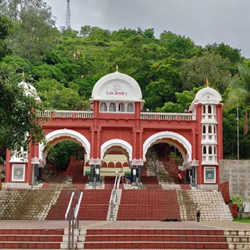
About The Chaturshringi Temple in Pune The Chaturshringi Temple is a famous Hindu temple located in Pune, Maharashtra, India. It is dedicated to the goddess Chaturshringi, who is believed to be the presiding deity of the city. The temple is situated on a hill, which is named after the temple itself. Architecture of Chaturshringi Temple The Chaturshringi Temple is known for its unique architecture and design. The temple complex is built in the Peshwa style of architecture, with a large courtyard surrounded by several smaller shrines. The main temple is located at the top of the hill and is accessible by a flight of steps. The temple is adorned with intricate carvings and sculptures, depicting various mythological stories. History The Chaturshringi Temple has a rich history dating back to the 18th century. It was built during the reign of the Maratha Empire, under the patronage of the Peshwa rulers. The temple was constructed to honor the goddess Chaturshringi, who is believed to be a powerful deity worshipped for protection and prosperity. Best Time To Visit The best time to visit the Chaturshringi Temple is during the months of October to February, when the weather is pleasant and cool. The temple is also beautifully decorated during the Navratri festival, which falls in the month of October. Thousands of devotees visit the temple during this time to seek the blessings of the goddess. How To Reach The Chaturshringi Temple is easily accessible by road and is located at a distance of 8 kilometers from the Pune city center. Visitors can hire a taxi or take a local bus to reach the temple. The nearest airport is the Pune Airport, which is about 15 kilometers away from the temple. The temple is also well-connected by public transportation. Significance Of The Chaturshringi Temple The Chaturshringi Temple holds great significance for the people of Pune and is considered a sacred place of worship. Devotees visit the temple to seek the blessings of the goddess Chaturshringi for protection, prosperity, and well-being. The temple also holds cultural and religious events throughout the year, attracting a large number of pilgrims and tourists. In conclusion, the Chaturshringi Temple is a revered religious site in Pune with a rich history and unique architecture. Visitors can experience peace and tranquility at the temple and seek the blessings of the goddess for a fulfilling life. The temple is a must-visit destination for those seeking spiritual enlightenment and cultural immersion in the vibrant city of Pune.
Explore More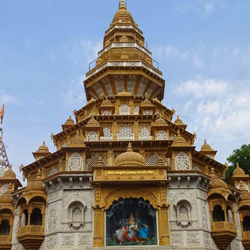
About The Dagdusheth Halwai Temple The Dagdusheth Halwai Temple, located in Pune, Maharashtra, is a well-known Hindu temple dedicated to the deity Lord Ganesha. It is one of the most popular temples in the city and is visited by thousands of devotees every day. The temple is named after its founder, Dagdusheth Halwai, who was a successful sweet seller and a devout follower of Lord Ganesha. Architecture of Dagdusheth Halwai Temple The architecture of the Dagdusheth Halwai Temple is a beautiful blend of Maratha and Mughal styles. The temple is adorned with intricate carvings, colorful decorations, and a majestic entrance gate. The main idol of Lord Ganesha is made of gold and is adorned with precious jewels. The temple also has a spacious courtyard where devotees can sit and meditate. History The Dagdusheth Halwai Temple was established in the late 19th century by Dagdusheth Halwai and his wife Lakshmibai. The couple built the temple as a way to express their gratitude to Lord Ganesha for their prosperity and success in business. Since then, the temple has become a symbol of devotion and faith for the people of Pune. Best Time To Visit The best time to visit the Dagdusheth Halwai Temple is during the festival of Ganesh Chaturthi, which usually falls in the month of August or September. During this time, the temple is decorated with lights, flowers, and garlands, and there are special prayers and ceremonies held in honor of Lord Ganesha. How To Reach The Dagdusheth Halwai Temple is located in the heart of Pune city, making it easily accessible by road. Visitors can take a taxi, auto-rickshaw, or public bus to reach the temple. The nearest railway station is Pune Junction, which is about 3 km away from the temple. Pune International Airport is also located at a distance of around 12 km from the temple. Significance Of The Dagdusheth Halwai Temple The Dagdusheth Halwai Temple holds great significance for the devotees of Lord Ganesha. It is believed that praying at this temple can fulfill one's wishes and bring prosperity and success. Many people visit the temple to seek blessings for their families, careers, and overall well-being. The temple also plays a vital role in the cultural and religious life of Pune, hosting various festivals and events throughout the year. Overall, the Dagdusheth Halwai Temple is a sacred place of worship, architectural beauty, and historical importance that attracts visitors from all over the country. It stands as a symbol of devotion, faith, and spiritual connection to the divine.
Explore More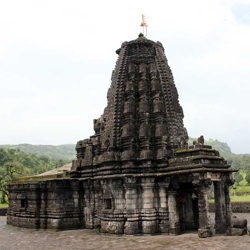
Siddheshwar & Ratneshwar Temples
About The Siddheshwar & Ratneshwar Temples The Siddheshwar & Ratneshwar Temples are two ancient temples located in the city of Latur in Maharashtra, India. These temples are dedicated to Lord Shiva and are considered to be significant religious sites for the followers of Hinduism. The Siddheshwar Temple is also known as Siddheshwar Jyotirlinga Temple, while the Ratneshwar Temple is dedicated to the goddess Parvati, also known as Ratnai. These temples are revered by devotees who visit to seek blessings, offer prayers, and participate in various religious ceremonies. Architecture of Siddheshwar & Ratneshwar Temples The Siddheshwar Temple is an architectural marvel that combines traditional Hindu temple architecture with intricate carvings and sculptures. The temple complex features a large sanctum sanctorum where the main idol of Lord Shiva is enshrined. The outer walls of the temple are adorned with beautiful sculptures depicting various Hindu deities, mythological stories, and intricate designs. The Ratneshwar Temple, on the other hand, follows a similar architectural style with a smaller structure dedicated to the goddess Parvati. History The history of the Siddheshwar & Ratneshwar Temples dates back several centuries, with the Siddheshwar Temple believed to have been built during the Yadava dynasty in the 12th century. The temples have undergone renovations and additions over the years, but have retained their original architectural grandeur and spiritual significance. The Ratneshwar Temple was constructed later as a compliment to the Siddheshwar Temple, further enhancing the religious importance of the temple complex. Best Time To Visit The best time to visit the Siddheshwar & Ratneshwar Temples is during the winter months of October to February when the weather is pleasant and conducive for exploring the temple complex. The annual festivals of Maha Shivaratri and Navratri are celebrated with great fervor at the temples, with devotees from all over the region coming to participate in the festivities. It is advisable to check the temple's schedule for specific dates and timings of religious events before planning your visit. How To Reach The Siddheshwar & Ratneshwar Temples are easily accessible by road, as Latur is well-connected to major cities in Maharashtra. The nearest airport is located in Aurangabad, approximately 250 kilometers away, with regular flights to Mumbai and other major cities. Latur also has a railway station that is connected to major towns and cities in Maharashtra. Local transportation options such as buses, taxis, and auto-rickshaws are available for commuting within the city. Significance Of The Siddheshwar & Ratneshwar Temples The Siddheshwar & Ratneshwar Temples hold immense religious and cultural significance for the people of Latur and the surrounding regions. Devotees visit the temples to seek blessings, offer prayers, and perform rituals to Lord Shiva and the goddess Parvati. The temples are believed to fulfill the wishes of the devotees who come with a pure heart and sincere devotion. The spiritual aura and divine ambiance of the temples make them a must-visit destination for those seeking solace and spiritual enlightenment.
Explore More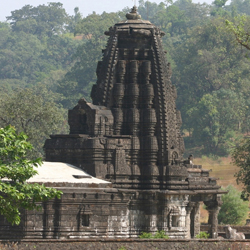
About The Amruteshwar Temple The Amruteshwar Temple is an ancient Hindu temple located in Bhandara, Maharashtra. It is dedicated to Lord Shiva and is known for its exquisite architecture and historical significance. The temple is believed to have been built in the 8th century and is one of the oldest temples in the region. Architecture of Amruteshwar Temple The Amruteshwar Temple is renowned for its unique Hemadpanthi architectural style, which is characteristic of temples built during the Yadava dynasty. The temple is built using black basalt stone and features intricate carvings and sculptures of various deities. The main sanctum sanctorum houses a Shivlinga (symbol of Lord Shiva) and is surrounded by smaller shrines dedicated to other gods and goddesses. History The Amruteshwar Temple has a rich history that dates back centuries. It is believed to have been constructed during the rule of the Yadava dynasty, which flourished in the region between the 11th and 13th centuries. The temple has undergone several renovations and additions over the years, but its original architecture and design have been preserved. It stands as a testimony to the rich cultural and religious heritage of Maharashtra. Best Time To Visit The best time to visit the Amruteshwar Temple is during the winter months, from October to February, when the weather is pleasant and conducive for sightseeing. The temple is also less crowded during this time, allowing visitors to explore its beauty in peace. However, the temple is open to visitors throughout the year, so you can plan your visit according to your convenience. How To Reach The Amruteshwar Temple is located in Bhandara, Maharashtra, which is well-connected by road and rail. The nearest railway station is Bhandara Road, which is about 5 kilometers away from the temple. You can also reach Bhandara by road via bus or taxi from major cities like Nagpur, which is about 70 kilometers away. The temple is easily accessible and can be reached conveniently from any part of Maharashtra. Significance Of The Amruteshwar Temple The Amruteshwar Temple holds great significance for devotees of Lord Shiva and is a popular pilgrimage site in Maharashtra. The temple is believed to possess divine powers and is visited by thousands of devotees every year. It is also a symbol of the rich architectural heritage of the region and attracts tourists and history enthusiasts from around the country. The Amruteshwar Temple is not just a religious site but also a cultural landmark that reflects the glory of ancient India. Overall, the Amruteshwar Temple in Bhandara is a must-visit destination for anyone interested in history, architecture, and spirituality. Its serene surroundings, intricate carvings, and divine aura make it a truly enchanting place to explore and experience the timeless beauty of Hindu culture.
Explore More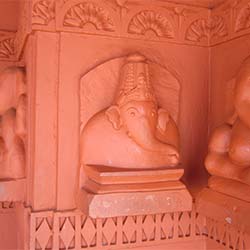
About The Ganpatipule Temple The Ganpatipule Temple is a famous Hindu temple located in Ganpatipule, Ratnagiri district in Maharashtra, India. It is dedicated to the Hindu god Ganesha, who is also known as "Ganpati" in the local language. The temple is situated on the Konkan coast and is one of the most visited Ganesh temples in India. Architecture of Ganpatipule Temple The Ganpatipule Temple is built in the traditional Konkan style of architecture, with a white facade and a towering spire. The temple is located right on the pristine Ganpatipule beach, offering devotees a breathtaking view of the Arabian Sea. The sanctum sanctorum houses a swayambhu (self-manifested) idol of Ganesha, which is believed to be thousands of years old. History The history of the Ganpatipule Temple dates back to centuries ago, with references to the temple found in ancient texts and scriptures. According to local legends, the temple was built by a sage named Morya Gosavi, who discovered the swayambhu idol of Ganesha while on a pilgrimage. The temple has since been renovated and expanded several times, but the original idol remains unchanged. Best Time To Visit The best time to visit the Ganpatipule Temple is during the winter months, from November to February, when the weather is pleasant and cool. The temple is also less crowded during this time, allowing devotees to have a peaceful darshan (sight) of the deity. The temple is open all year round, and special festivals like Ganesh Chaturthi and Maghi Ganesh Jayanti are celebrated with great pomp and fervor. How To Reach The Ganpatipule Temple is easily accessible by road, rail, and air. The nearest airport is in Ratnagiri, which is about 50 kilometers away from the temple. The nearest railway station is in Ratnagiri as well, which is well-connected to major cities in Maharashtra. Buses and taxis are available from Ratnagiri to Ganpatipule, making it convenient for devotees to reach the temple. Significance Of The Ganpatipule Temple The Ganpatipule Temple holds great significance for devotees, who believe that visiting the temple and seeking the blessings of Ganesha can bring peace, prosperity, and success in their lives. The temple is also believed to fulfill wishes and desires of the devotees, who offer prayers and perform rituals with devotion. The tranquil setting of the temple, surrounded by lush greenery and the pristine beach, adds to the spiritual experience of the visitors. In conclusion, the Ganpatipule Temple is not just a place of worship, but also a symbol of faith, devotion, and cultural heritage. Its serene atmosphere and stunning location make it a must-visit destination for spiritual seekers and tourists alike.
Explore More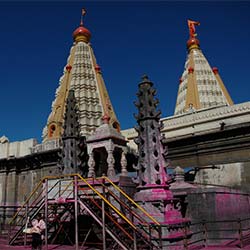
About The Jyotiba Temple The Jyotiba Temple, located in Kolhapur, Maharashtra, is a popular Hindu pilgrimage site dedicated to the deity Jyotiba. The temple is situated atop a hill and offers breathtaking views of the surrounding lush greenery. Devotees from all over the country visit this sacred site to seek blessings and fulfill their wishes. Architecture of Jyotiba Temple The Jyotiba Temple has a unique architectural style that showcases a blend of traditional Marathi and Hindu architectural elements. The temple complex consists of multiple structures, including the main shrine, prayer halls, and smaller temples dedicated to other deities. The intricate carvings and sculptures adorning the temple walls reflect the rich cultural heritage of the region. History The history of the Jyotiba Temple dates back several centuries. It is believed that the temple was built by the Yadava dynasty rulers in the 12th century. Over the years, the temple has undergone several renovations and expansions, making it the grand structure that it is today. The temple holds great religious and historical significance for the local community and devotees. Best Time To Visit The best time to visit the Jyotiba Temple is during the winter months of October to March when the weather is pleasant and ideal for exploring the temple complex. The annual Jyotiba Yatra, held in the months of March or April, is a popular festival when devotees flock to the temple to celebrate and offer prayers. How To Reach The Jyotiba Temple is easily accessible by road, located about 20 kilometers from Kolhapur city. Visitors can hire a taxi or take a bus from the city to reach the temple. The nearest railway station is Kolhapur Railway Station, and the nearest airport is Kolhapur Airport. From there, one can hire a cab or use public transportation to reach the temple. Significance Of The Jyotiba Temple The Jyotiba Temple holds great religious significance for devotees who believe that worshipping Jyotiba can fulfill their wishes and bring them success and prosperity. The deity is considered a manifestation of the Hindu god Shiva and is worshipped for protection and blessings. The temple is also associated with various myths and legends that add to its mystical aura. Overall, the Jyotiba Temple in Kolhapur is a must-visit destination for those seeking spiritual solace and a glimpse into the rich cultural heritage of Maharashtra. With its stunning architecture, historical significance, and picturesque location, the temple offers a truly enriching experience for visitors of all ages.
Explore More
About The Kopeshwar Temple The Kopeshwar Temple, located in Kolhapur, Maharashtra, is a stunning example of ancient Indian architecture and religious significance. This temple is dedicated to Lord Shiva and is known for its intricate carvings, towering pillars, and unique architectural style. The temple is a popular pilgrimage site for devotees and tourists alike, seeking spiritual enlightenment and cultural exploration. Architecture of Kopeshwar Temple The Kopeshwar Temple showcases a mix of the Hemadpanthi and Yadava styles of architecture, dating back to the 12th century. The temple is built using black stone and features intricate carvings of gods, goddesses, and mythical creatures. The main shrine houses a large Shiva Lingam, surrounded by smaller shrines dedicated to other deities. The temple's impressive pillars and domes add to its grandeur and make it a sight to behold. History The Kopeshwar Temple was built during the Yadava dynasty, under the patronage of the rulers of the region. It is believed that the temple was constructed by Basant Rao Saraf, a wealthy merchant, in honor of his late wife. The temple's construction took several years to complete, with contributions from various artisans and craftsmen. Over the years, the temple has undergone renovations and repairs, but has retained its original charm and beauty. Best Time To Visit The best time to visit the Kopeshwar Temple is during the winter months, from October to February, when the weather is pleasant and ideal for exploring the temple complex. The annual festivals of Mahashivratri and Kartik Purnima are celebrated with great fervor at the temple, drawing large crowds of devotees. Visitors can also witness the grandeur of the temple during these festive occasions. How To Reach The Kopeshwar Temple is located in Khidrapur, around 60 kilometers from Kolhapur city. Visitors can reach the temple by road, either by private vehicle or public transport. Kolhapur is well-connected to major cities in Maharashtra by road and rail, making it easy for tourists to access the temple. The nearest airport is in Kolhapur, which is around 80 kilometers away from the temple. Significance Of The Kopeshwar Temple The Kopeshwar Temple holds immense religious significance for devotees of Lord Shiva. It is believed that worshipping at the temple can bring blessings, prosperity, and fulfillment of desires. The temple also serves as a cultural heritage site, showcasing the rich architectural and sculptural traditions of ancient India. Visitors to the temple can experience a sense of peace and tranquility, amidst the divine aura and sacred surroundings. In conclusion, the Kopeshwar Temple in Kolhapur is a marvel of ancient Indian architecture and religious devotion. With its intricate carvings, grand pillars, and spiritual significance, the temple stands as a testament to the rich cultural heritage of the region. Visiting the Kopeshwar Temple is not just a journey of faith, but also a unique opportunity to explore the artistic and architectural wonders of ancient India.
Explore More
The Mahalaxmi Temple Kolhapur, also known as Shree Ambabai Temple, is one of Maharashtra’s most sacred Shaktipeethas and a place where spirituality meets centuries-old heritage. Devotees from across India visit the shrine to seek blessings of Goddess Ambabai, the presiding deity of prosperity, courage, and fulfillment. With a history that spans more than 1,400 years, the temple stands as a timeless representation of devotion, architecture, and cultural legacy. If you are planning a Kolhapur Mahalaxmi darshan, this complete guide will help you understand the temple’s timing, history, rituals, darshan options, and tips for a comfortable visit. Introduction to Mahalaxmi Temple Kolhapur Situated on the banks of the Panchganga River, the temple is dedicated to Goddess Mahalaxmi—an incarnation of Adi Shakti. Kolhapur, steeped in tradition and royal heritage, is regarded as one of India’s major pilgrimage hubs. The temple attracts lakhs of devotees every year, especially during Navratri, Kirnotsav, and Fridays, considered highly auspicious for the Goddess. Unlike many temples where Goddess Lakshmi is worshipped alongside Lord Vishnu, here she is the main deity, making Kolhapur a spiritually exceptional destination. Devotees believe that visiting the shrine frees them from financial troubles, fulfills wishes, and brings mental calm. Historical Background of the Temple The history of the temple is deeply rooted in ancient Indian texts and inscriptions. It is believed that the original sanctum (Garbhagriha) was built during the reign of the Chalukya dynasty in the 7th century CE. Over the centuries, various rulers—including the Shilaharas, Yadavas, Kadambas, and Marathas—expanded and renovated the temple complex. Key Historical Highlights 7th Century CE – Built by Chalukya Kings, known for advanced Dravidian architecture. 11th–12th Century – Renovations under Shilahara rulers, who added intricate stone carvings. Maratha Era – Further enhancements under the patronage of Chhatrapati Shahu Maharaj. British Period – Preservation and structural protection efforts increased due to its growing popularity. The temple retains its original black stone architecture decorated with carvings of gods, goddesses, dancers, and mythological figures. The idol of Ambabai is carved from a single black stone and is nearly 3 feet high. She holds a mace, shield, fruit, and bowl—symbolizing power, protection, prosperity, and nourishment. Architectural Significance The Mahalaxmi Temple is an outstanding example of Hemadpanthi architecture, which uses locally sourced black stone and lime. The layout consists of: Garbhagriha (Sanctum) – Houses the deity with a deepstambh (lamp tower). Mandaps (Halls) – Used for prayers, gatherings, and daily rituals. Mahadwar – A grand entrance with carved pillars. Shrines of Mahakali, Saraswati, Ganapati, Dattatreya, and Shiva – Representing unity of divine forces. A remarkable architectural phenomenon is the Kirnotsav—the “Festival of Sun Rays”—celebrated twice a year when the setting sun’s rays fall directly on the idol of Ambabai. This natural alignment showcases the astronomical mastery of ancient Indian architects. Kolhapur Mahalaxmi Darshan Timing (Daily Schedule) (Includes keyword: kolhapur mahalaxmi darshan timing) To help devotees plan conveniently, here are the standard darshan hours: Morning Schedule Temple Opens: 4:00 AM Kakad Aarti: 4:30 AM Morning Darshan: 5:00 AM – 12:30 PM Afternoon Break Temple Closed: 12:30 PM – 1:00 PM Evening Schedule Temple Reopens: 1:00 PM Evening Darshan: 1:00 PM – 8:00 PM Dhoop Aarti: 8:00 PM Shej Aarti (Closing Aarti): 10:00 PM Note: Timings may vary during festivals, Navratri, or special poojas. Mahalaxmi Kolhapur Online Darshan Options (Includes keyword: mahalaxmi kolhapur online darshan) For devotees who cannot visit in person, the temple offers online pooja booking and virtual participation in daily rituals. Services include: Online Darshan streaming E-pooja and prasad delivery Booking for Abhishek, Archana, and special sevas Donation and temple welfare contributions These services help devotees stay connected with the temple from anywhere in the world, ensuring spiritual continuity even from a distance. Kolhapur Ambabai Live Darshan (Includes keyword: kolhapur ambabai live darshan) The temple management provides live darshan on official platforms, especially during major festivals. The live-streaming setup allows devotees to watch the morning and evening aartis, special rituals, and festive celebrations in real time. It is especially beneficial for elderly devotees and those living outside Maharashtra. Rituals, Poojas & Festivals at the Temple The temple follows ancient rituals that have been performed for centuries. Visitors can participate in: Daily Sevas Abhishek Alankaar Naivedya Archana Aarti Major Festivals Navratri – 9 days of celebration with grand decorations and cultural events. Margashirsha Fridays – Extremely auspicious for Mahalaxmi devotees. Kirnotsav – Sun-rays festival held in January and November. Diwali – Temple glows with thousands of lamps and special Aarti. Chaitra Purnima – Mass attendance and spiritual gatherings. Significance of Visiting Mahalaxmi Temple Kolhapur The temple holds immense importance in Hindu beliefs. Some reasons devotees consider a visit spiritually transformative include: Blessing of Prosperity Goddess Mahalaxmi symbolizes wealth, abundance, and stability. Devotees believe their financial struggles ease after seeking her blessings. One of the Shaktipeethas It is believed that the temple stands where the “Maha-Shakti” energy resides eternally. Spiritual Peace The ambience of the temple, combined with sacred chants and Aartis, creates a calming environment. Historical & Cultural Learning Visitors experience centuries-old architecture, legends, and cultural traditions. Travel Guide – How to Reach the Temple By Road Kolhapur is well-connected through national highways from Pune, Satara, Belgaum, and Goa. State buses, private cabs, and tourist coaches are easily available. By Train Kolhapur Railway Station (C. Shahumaharaj Terminus) is 5–6 km from the temple with daily trains from Mumbai, Pune, Bengaluru, and Hyderabad. By Air The nearest airport is Kolhapur Airport, around 10 km away. Local Transport Auto-rickshaws, buses, and ride-hailing cabs are available 24×7 around the temple. Essential Tips for Devotees Visit early morning to avoid long queues. Dress modestly per temple guidelines. Keep mobile phones on silent; photography inside sanctum is restricted. Special queues are available for senior citizens. Avoid peak timings on Fridays and festival days unless you want to participate in rituals. Book accommodation in advance during Navratri and Margashirsha month. Conclusion The Mahalaxmi Temple Kolhapur is not just a religious destination—it is an enriching blend of ancient architecture, divine energy, and cultural grandeur. Whether you visit for Kolhapur Mahalaxmi darshan, join online darshan, or watch Kolhapur Ambabai live darshan, the presence of Goddess Ambabai brings peace, prosperity, and spiritual upliftment. This temple stands as a timeless symbol of Maharashtra’s devotion, architectural brilliance, and rich heritage. Anyone visiting Kolhapur must experience the beauty and divinity of this sacred Shaktipeetha at least once in their lifetime.
Explore More
About The Bhairavnath Temple The Bhairavnath Temple is a revered Hindu temple located in the picturesque town of Lonavala, Maharashtra. Dedicated to Lord Bhairavnath, a fierce manifestation of Lord Shiva, this temple holds immense significance among devotees and tourists alike. The temple is known for its spiritual ambiance and stunning architecture, making it a must-visit destination for those seeking solace and blessings. Architecture of Bhairavnath Temple The Bhairavnath Temple boasts a unique architectural style that is a blend of traditional and contemporary designs. The temple complex is characterized by its intricate carvings, stunning sculptures, and vibrant paintings depicting various Hindu mythological stories. The main sanctum sanctorum of the temple houses the idol of Lord Bhairavnath, adorned with flowers and garlands by the devotees. The temple's exterior is equally impressive, with ornate pillars, towering spires, and a grand entrance that welcomes visitors with open arms. History The history of the Bhairavnath Temple dates back several centuries, with its origins shrouded in myth and legend. According to popular belief, the temple was built by a devout king who was blessed by Lord Bhairavnath for his unwavering faith and devotion. Over the years, the temple has undergone several renovations and expansions, yet it has managed to retain its ancient charm and spiritual significance. Today, the Bhairavnath Temple stands as a testament to the rich cultural heritage of Lonavala and continues to attract pilgrims from far and wide. Best Time To Visit The best time to visit the Bhairavnath Temple is during the winter months, from October to February, when the weather is cool and pleasant. This is also the time when the temple hosts various festivals and events, attracting a large number of devotees and visitors. It is advisable to avoid visiting the temple during the monsoon season, as the heavy rainfall may disrupt travel plans and make the temple premises slippery and unsafe. How To Reach The Bhairavnath Temple is located in Lonavala, a popular hill station in Maharashtra, making it easily accessible by road, rail, and air. The nearest airport to Lonavala is Pune Airport, which is approximately 65 kilometers away. From the airport, visitors can hire a taxi or take a bus to reach the temple. For those traveling by train, Lonavala Railway Station is well-connected to major cities like Mumbai and Pune. From the railway station, visitors can hire a cab or auto-rickshaw to reach the temple. Significance Of The Bhairavnath Temple The Bhairavnath Temple holds immense significance among devotees for its association with Lord Bhairavnath, who is believed to be a fierce protector and a benevolent deity. Pilgrims visit the temple to seek blessings for protection, prosperity, and overall well-being. The temple is also known for its spiritual energy and tranquil ambiance, making it a popular destination for meditation and prayer. Many devotees believe that a visit to the Bhairavnath Temple can bring peace and harmony into their lives, fulfilling their wishes and desires. Overall, the Bhairavnath Temple in Lonavala is a sacred place of worship that captivates visitors with its architectural grandeur, spiritual aura, and historical significance. Whether you are a devout pilgrim seeking blessings or a curious traveler exploring the cultural heritage of Maharashtra, a visit to this temple is sure to leave a lasting impression on your mind and soul.
Explore More
If you are planning a trip to Shirdi, one place you should not miss is Lendi Baug. While Shirdi is famous for the Sai Baba Samadhi Mandir, Lendi Baug holds its own quiet magic. It’s not just a garden; it’s a place filled with history, peace, and a deep connection to Sai Baba’s life. Walking through Lendi Baug gives you a glimpse into Sai Baba’s simple way of living and his love for nature. Let’s explore everything you need to know about Lendi Baug as a traveler! What is Lendi Baug? Lendi Baug is a beautiful garden located inside the Shirdi temple complex. The word "Lendi" refers to a small stream or wet area. Long ago, this area had a small stream flowing through it. Sai Baba would visit this garden every morning and afternoon. He used to water the plants, dig soil, and spend time meditating under the shade of trees. Today, Lendi Baug is maintained as a sacred garden. It has lush greenery, a peaceful atmosphere, and important sites connected to Sai Baba’s daily routine. The History of Lendi Baug During Sai Baba's time, Lendi Baug was not the organized garden you see today. It was a simple, almost wild place with trees and bushes. Sai Baba personally took care of the garden. He would water the plants with a small earthen pot, plant saplings, and even rest here under the trees. It is believed that he spent many silent hours meditating at Lendi Baug. His daily presence turned the garden into a sacred space where his spiritual energy still feels alive. Key Attractions Inside Lendi Baug When you enter Lendi Baug, there are several important spots you should visit: 1. Nanda Deep (Sacred Lamp) One of the most important features inside Lendi Baug is the Nanda Deep — a lamp lit by Sai Baba himself. He kept it burning under a neem tree in the garden. Even today, this sacred lamp burns continuously. It symbolizes hope, light, and the eternal energy of Sai Baba. 2. Well (Water Source) There is an old well inside Lendi Baug. It is said that Sai Baba used to draw water from this well to nourish the plants himself. The well reminds visitors of Baba’s humility and love for nature. 3. Pathways and Flower Beds The garden today is beautifully maintained, with neat pathways and colorful flower beds. Walking along these paths gives a feeling of calmness and connects visitors to the simplicity that Sai Baba valued. 4. Meditation Spaces Several shaded spots around the garden are perfect for sitting quietly and meditating. Many travelers choose to spend some peaceful moments here, away from the busy temple crowds. Why Should You Visit Lendi Baug? As a traveler, Lendi Baug offers you a different experience compared to the main temple. Here are a few reasons why you should definitely visit: Spiritual Calm: The peaceful environment helps you slow down and experience inner calmness. Connect with Nature: You can enjoy the greenery, flowers, and fresh air, all nurtured by Sai Baba’s loving hands. Feel Sai Baba’s Presence: Knowing that Sai Baba personally cared for this garden makes your visit even more special. Photography: While photography is restricted inside the temple premises, walking around the garden and capturing nature’s beauty is often allowed. Relaxation: After a busy darshan at the temple, a stroll through Lendi Baug is a perfect way to relax and reflect. Best Time to Visit Lendi Baug You can visit Lendi Baug throughout the year, but some seasons make the experience even better: Winter (November to February): Cool weather makes walking through the garden comfortable and refreshing. Monsoon (June to September): During the rains, the garden becomes even greener and more vibrant, though you might have to carry an umbrella. Early Morning or Evening: Visiting during these times helps you avoid the harsh afternoon sun and experience the garden’s peace at its best. How to Reach Lendi Baug By Air: The nearest airport is Shirdi International Airport (about 15 km away). From there, taxis and autos are easily available. By Train: Shirdi has its own railway station (Sainagar Shirdi Railway Station), well connected to major cities like Mumbai, Pune, and Hyderabad. By Road: Shirdi is easily accessible by bus or car from Mumbai (240 km), Pune (190 km), and Nashik (90 km). Once you reach the Shirdi temple complex, Lendi Baug is just a short walk inside the premises. Things to Keep in Mind When Visiting Respect the Peace: Keep your voice low and avoid unnecessary noise. Lendi Baug is a place for reflection and prayer. No Littering: Help maintain the beauty of the garden by not littering. Footwear Rules: You may need to leave your footwear outside certain areas, so plan accordingly. Modest Dressing: Dress modestly out of respect for the religious setting. Photography Restrictions: Check the latest rules regarding photography. Sometimes restrictions may apply to preserve the sanctity. Nearby Attractions You Can Explore After visiting Lendi Baug, you can also explore these nearby places: Sai Baba Samadhi Mandir: The main temple where Sai Baba’s tomb is located. Dwarkamai: The sacred mosque where Sai Baba lived. Chavadi: The place where Sai Baba stayed during his final years. Sai Teerth Theme Park: A unique theme park based on Sai Baba's life and Indian spirituality. Lendi Baug is more than just a garden — it’s a living memory of Sai Baba’s simple, loving life. For travelers, it offers a chance to pause, breathe, and connect with a deeper sense of peace. Walking through its paths, seeing the sacred lamp, and sitting under its shady trees brings a feeling of closeness to Sai Baba’s spirit. If you are looking for more than just sightseeing during your Shirdi trip, a visit to Lendi Baug will touch your heart and stay with you long after you leave. Make sure to include this serene garden in your Shirdi itinerary and experience the quiet magic that countless visitors feel every day.
Explore More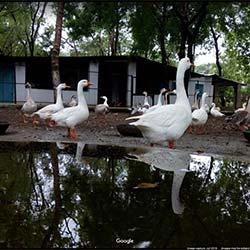
The holy land of Anandwan doesn’t require any formal introduction. It is a well-known attraction that lies 5 km from the main town of Chandrapur. Anandwan translates to the ‘Forest of Joy’ and was established by a noted social-activist, Lt. Murlidhar Devidas Amte aka Baba Amte. It is an ashram that was established for the welfare of the lepers. This place still provides medical help to the underprivileged, orphans, and blinds.It Is Known For:-1) Anandwan, as said by the people, is a paradise for the underprivileged as they are helped and made self-dependent by the volunteers of the ashram.2) Apart from providing the medical assistance, Anandwan is also shaped as an environment and natural resource-friendly place. It aware others about benefits of going green, preserving the resources, recycling the waste, teaching the underprivileged, and much more.3) Today, Anandwan houses two hospitals, a college, an orphanage, a school for the blind, a school for the deaf, and a technical wing.4) It also promotes the activities of singing, art & craft, dance etc. among the specially-abled.Best Time To Visit:-Anandwan is a place that is always open to all races and faiths. It doesn’t practice discrimination and welcomes the visitors throughout the year. People from different parts of Maharashtra visit Anandwan. Not only the common people but it is also visited by many well-known personalities from different industries.Before visiting, one has to fill a form with all required details as per the policies of the place.Reaching There:-Anandwan is well-connected via all major roads and railheads in Chandrapur. The local transit is available at regular intervals for commuting to and from the place conveniently.Nearest Railway Station:- Chandrapur Railway StationNearest Airport:- Nagpur Airport
Explore More6N - 7D Hazoor Sahib Pilgrimage Tour
7 Days/ 6 Night
Nanded
Grand India Tour 29 Days
29 Days/ 28 Night
New Delhi - Jaipur - Jaisalmer - Jodhpur - Ranthambore - Udaipur - Agra - Varanasi - Kochi - Alleppey - Khajuraho - Mumbai - Orchha - Munnar - Goa City
Ashtavinayaka Yatra – 2026 Tour Package
3 Days/ 2 Night
Mumbai - Pali
Bangalore To Madya Pradesh Road Trip 15 Nights 16 Days
16 Days/ 15 Night
Hyderabad - Bangalore - Bandhavgarh - Bhopal - Jabalpur - Khajuraho - Pachmarhi - Nagpur - Orchha - Sanchi

About The Kanakeshwar Devasthan Temple The Kanakeshwar Devasthan Temple is a prominent Hindu temple located near Alibag in the Raigad district of Maharashtra, India. Situated atop a hill at an altitude of 1200 feet, the temple offers breathtaking views of the surrounding lush greenery and the Arabian Sea. The temple is dedicated to Lord Shiva and is visited by devotees from all over the country. Architecture of Kanakeshwar Devasthan Temple The temple follows traditional Hindu temple architecture with intricate carvings and sculptures adorning its walls and pillars. The main sanctum sanctorum houses the idol of Lord Shiva, with other deities also present in smaller shrines within the temple complex. The temple's entrance is adorned with a magnificent archway that leads to a spacious courtyard where devotees can offer their prayers. History The Kanakeshwar Devasthan Temple has a rich history that dates back to ancient times. It is believed that the temple was built by a local ruler named Raja Ramdeorai Yashwant in the 18th century. The temple has since been renovated and expanded over the years, but its original charm and spiritual significance have remained intact. Best Time To Visit The best time to visit the Kanakeshwar Devasthan Temple is during the winter months of October to February when the weather is pleasant and conducive for sightseeing. The temple also witnesses a large number of devotees during the Hindu festivals of Maha Shivaratri and Navratri, making it an auspicious time to visit. How To Reach The Kanakeshwar Devasthan Temple is located approximately 13 kilometers from Alibag and is easily accessible by road. Visitors can hire taxis or take local buses from Alibag to reach the temple. The nearest railway station is Pen Railway Station, which is around 28 kilometers away from the temple. From Pen, one can hire a taxi or take a bus to reach the temple. Significance Of The Kanakeshwar Devasthan Temple The Kanakeshwar Devasthan Temple holds immense spiritual significance for devotees, who believe that praying at the temple can fulfill their wishes and bring them peace and prosperity. The temple is also known for its tranquil and serene ambiance, making it a popular destination for those seeking solace and spiritual enlightenment. The breathtaking views from the hilltop temple add to the overall experience, making it a must-visit for tourists and devotees alike. Overall, the Kanakeshwar Devasthan Temple is a sacred place that exudes peace and tranquility, making it a must-visit destination for those seeking spiritual solace and breathtaking views of nature.
Explore More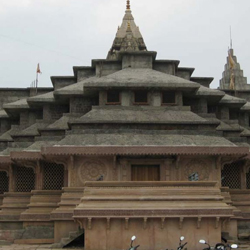
About The Bhakti Dham Temple The Bhakti Dham Temple, located in Amravati, is a renowned religious site dedicated to Lord Vitthal and Goddess Rukmini. It is a popular pilgrimage destination for devotees seeking spiritual solace and blessings. The temple complex is beautifully designed and adorned with intricate carvings and sculptures, making it a visual delight for visitors. Architecture of Bhakti Dham Temple The architecture of the Bhakti Dham Temple showcases a blend of traditional and modern styles. The main temple structure features a grand entrance gate, a spacious courtyard, and a sanctum sanctorum where the idols of Lord Vitthal and Goddess Rukmini are enshrined. The temple also has smaller shrines dedicated to other deities, adding to its architectural charm. History The Bhakti Dham Temple has a rich historical background dating back to several centuries. It is believed that the temple was established by a revered saint or spiritual leader who wanted to create a sacred space for devotees to worship and seek divine blessings. Over the years, the temple has undergone renovations and expansions to accommodate the growing number of pilgrims visiting the site. Best Time To Visit The best time to visit the Bhakti Dham Temple is during religious festivals and special occasions when the temple is adorned with decorations and celebrations are held in honor of the deities. Navratri, Ekadashi, and other auspicious days are ideal for experiencing the spiritual ambiance and witnessing traditional rituals at the temple. How To Reach The Bhakti Dham Temple is easily accessible by road, rail, and air. The nearest airport is in Nagpur, approximately 150 kilometers away from Amravati. The temple is well-connected by roads, and regular bus services are available from major cities nearby. For those traveling by train, the Amravati railway station is the closest option. Significance Of The Bhakti Dham Temple The Bhakti Dham Temple holds great significance for devotees who believe in the divine presence of Lord Vitthal and Goddess Rukmini. It is a place of worship, meditation, and spiritual enlightenment, attracting pilgrims from far and wide. The temple is also known for its charitable activities, community events, and cultural programs that promote unity and harmony among people of different faiths. In conclusion, the Bhakti Dham Temple in Amravati is a sacred place where devotees can connect with the divine, seek blessings, and experience a sense of peace and tranquility. The temple’s architectural beauty, historical significance, and spiritual ambiance make it a must-visit destination for anyone seeking a spiritual journey or cultural experience.
Explore More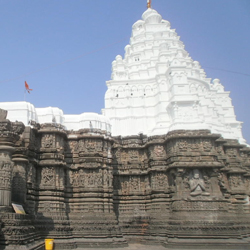
India is a country known for its vast culture and temples. Among most famous temples in India, Aundha Nagnath Temple is the ancient temple of Shiva. It is positioned in the district of Hingoli, Maharashtra, India and is considered as one of the prestigious Jyotirlingas of India. The temple property is spread over an area of 60,000 sq. Ft., among which the temple covers an area of 7200 sq. Ft. with a height of 60 ft. for the tourists, there are many good things to witness apart from just its spiritual significance. ARCHITECTURE OF THE TEMPLE The extraordinarily attractive carvings existing in this lord shiva temple are worth seeing. To name the style of architecture of this temple at present is Hemadpanti architecture style. SIGNIFICANCE OF THE TEMPLE The temple is very thoroughly connected with the lives of saints like • Visoba Khechara, • Namdev and • Jnanesvar. Once Namdev went to Jnanesvar temple where he was advised to visit Aundha Nagnath Temple to search for a suitable maharishi. When he reached in the temple, he saw Visoba Khechara taking resting while putting his feet on the lingam. By seeing Namdev got angry, scolded Visoba and told him that he has insulted Lord Shiva. Then Visoba did not say anything but asked him to put his feet somewhere else with a genuine smile. But wherever Namdev kept Visoba’s feet, a linga itself came up. In this way with the help of his yogic supremacies, Visoba filled the entire temple with Lord Shiva lingam. He also preached Namdev about the omnipresence of God. There is yet another famous story related to the founding of the temple. Once Namdev was singing Bhajans along with his gurus, in front of the temple. Then he was asked to stop singing by the temple priest as he was disturbing the routine puja. The priest also insulted Namdev by calling him a shudra that belongs to a lower caste. Hence he was not allowed entering the temple. After being humiliated Namdev went behind the temple and started singing the bhajans over again. It is believed that God also wanted to see the devotee and to listen to the bhajans by facing them, so he revolved the entire temple to Namdev. This is the reason there is a Nandi always seen at the backside of the temple. A famous name, who is known as the founder of Sikhism, Guru Nanak also visited this temple once, when travelled this area. He also saw the birthplace of Namdev, Narsi Bamani. HISTORY OF THE TEMPLE Aundha Nagnath temple, located in Hingoli district of Maharashtra, India is said to be the eighth Jyotirlinga of the twelve Jyotirlinga present all across India. It is also known as one of the main places of pilgrimage in India. The temple is estimated to be built by the Yadava Dynasty dated back to the 13th century. It is also believed that the very first temple was set during the time of Mahabharata which was built by Yudhishthira. He was the eldest of the Pandavas and built the temple when all of the five Pandavas were sent into exile for 14 years from Hastinapur. At the time of Mughals, Aurangzeb once attacked this temple. Before the attack, this temple was said to be a seven-storied building. HOW TO REACH AUNDHA NAGNATH TEMPLE HINGOLI The Aundha Nagnath Temple Hingoli Maharashtra witness a huge footfall every year and reason is reaching the temple is not a difficult task. One can easily find a bus and train to Hingoli from anywhere in Maharashtra. Numerous coaches are also available from main cities of Maharashtra such as Pune, Aurangabad, Mumbai and Nagpur. The nearest railway station to this place is named Parbhani which is estimated 50 km away from the temple. The adjoining airport, Nanded, is 54 km away from the temple. FESTIVALS CELEBRATED Although the festival remains jam-packed all year long the pious occasion of Vijayadashami and Maha Shivaratri, it expects a significant number of visitors. A large number of pilgrims come to visit this place. THINGS TO DO IN AND AROUND Every year in the Hindu month of Magha which is usually January/February according to English calendar a fair is held near this temple. During this period, this temple is visited by a number of pilgrims and devotees. The show lasts until the Hindu month of Phalguna. Other than these festivals, one can also attend various types of puja and occasions celebrated with great vigour every month. OPENING/CLOSING TIMINGS AND DAYS The temple opens at 04:00 AM and closes by 09:00PM every day, whereas in the month of Shravana the temple closes by 10:00PM. ENTRY FEE No entry fee is asked by anybody to enter the temple. However, one needs to pay Dakshina or Daan for doing the puja. BEST TIME TO VISIT A temple is open for the devotees every day but the best time to visit the temple is during the occasions of Ekadashi, Vijayadashami and Maha Shivaratri. During this period a large number of devotees come to visit this pilgrimage and hence make this place a celebration point. Furthermore, one can visit during the morning and evening aarti, which gives a peaceful and spiritual feeling. Tourist Places to Visit in Hingoli Apart from Aundha Nagnath temple, there are other famous places also a tourist can visit. • Tulaja Devi Sansthan temple • Mallinath Digambar Jain temple • Siddheshwar Dam • Bhagwan Shantinath Jinalaya • Sant Namdev Sansthan
Explore More
About The Parli Vaijnath Temple The Parli Vaijnath Temple, located in Beed district in Maharashtra, is dedicated to the Hindu deity Lord Vaijnath, also known as Lord Shiva. This ancient temple is one of the twelve Jyotirlingas, which are considered to be the most sacred abodes of Lord Shiva. The temple is surrounded by lush greenery and offers a peaceful and spiritual ambiance to all its visitors. Architecture of Parli Vaijnath Temple The Parli Vaijnath Temple showcases a beautiful blend of traditional and modern architectural styles. The temple complex is adorned with intricate carvings, sculptures, and paintings that depict various mythological stories and legends related to Lord Shiva. The main sanctum sanctorum of the temple houses the lingam, a representation of Lord Vaijnath, and is adorned with elaborate decorations and offerings by devotees. History The history of the Parli Vaijnath Temple dates back to ancient times and is steeped in mythology. According to legends, it is believed that the temple was built by the Pandavas during their exile. The temple has undergone several renovations and expansions over the centuries, making it a significant religious site for Hindus across the country. Best Time To Visit The best time to visit the Parli Vaijnath Temple is during the winter months from November to February when the weather is pleasant and ideal for sightseeing. The temple also hosts various festivals and religious events throughout the year, attracting a large number of devotees and tourists. How To Reach The Parli Vaijnath Temple is well-connected by road and can be easily reached from major cities like Mumbai, Pune, and Aurangabad. The nearest railway station is in Parli, which is just a few kilometers away from the temple. Visitors can also hire taxis or take buses to reach the temple from nearby towns and cities. Significance Of The Parli Vaijnath Temple The Parli Vaijnath Temple holds immense religious significance for Hindus and is believed to fulfill the wishes and prayers of devotees who visit the temple with a pure heart. The temple is also known for its healing properties and is visited by people seeking relief from various ailments and problems. It is considered a sacred place for meditation and spiritual growth, attracting devotees from far and wide. In conclusion, the Parli Vaijnath Temple in Beed is a place of immense spiritual significance and historical importance. The temple's stunning architecture, rich history, and peaceful ambiance make it a must-visit destination for all those seeking solace and divine blessings.
Explore More